The Viking Myth
By michaelenger 8 Comments
This article was originally posted on BnBGaming on March 7th, 2011.
"Carry your head always high in battle, where swords seek to shatter the skulls of doomed warriors"
— Harald Hardrada, viking king of Norway (1047-1066)
The Elder Scrolls V: Skyrim has been announced, set to be released in November, and it features the last of the Dragonborn fighting the true dragons in the realm of Skyrim, home to the Nord race. With the trailer featuring a fighter carrying a round shield and horned helmet, along with being set in the northern part of Tamriel and featuring a race of light-skinned people with blond hair called the Nord, it's very obvious that the game takes heavy inspirations from Viking history.
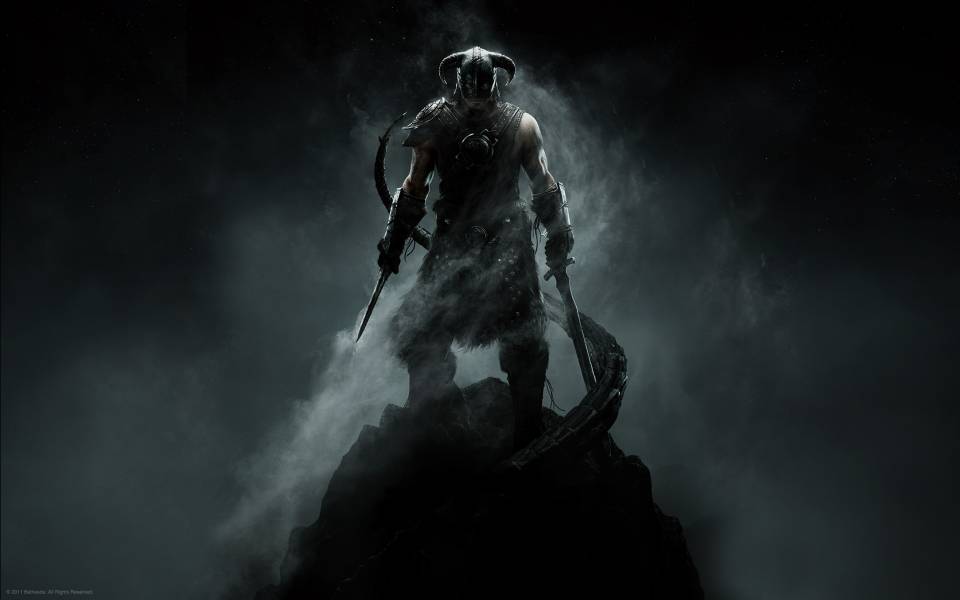
It is not the first game to do so, as many games have featured Vikings in the past, whether directly referencing historical details or set in a fantasy setting where certain traits or equipment are based on what we know about the Vikings. The norse people, who are most widely known for their brutal and successful raids, lived from the 8th to 11th century and have had their history distorted by hearsay and misconceptions, all of which have been replicated in videogames. Historical pedantry aside, it's interesting to see what videogame designers have extracted from historical accounts and where they have taken liberties with the facts.
Note: This article will focus on the aspects of Vikings that have been featured in videogames and is not an in-depth study of Viking history. For more information about Vikings, I suggest you check out the sources as the bottom of this article.
Weaponry and Armor
First of all, it's important to note that Vikings didn't have horns on their helmets. Sure, this iconic idea of horned helmets is the first thing people think about, but it comes from a fantastical description of Vikings several hundred years after they had faded away. Viking helmets were simple, had a domed or peaked cap with nose or eye guards and were most likely not made of metal very often, the Vikings favoring leather due to its cheap and durable nature. Leather was used heavily in the creation of body armor as well, and mail was worn only by the rich and important members of society. Wearing lots of armor was heavy, slowed you down and made it harder to move during combat, factors which made using armor quite unattractive to the dapper young Viking. Leather was the name of the game and if you got stabbed you just worked through the pain.
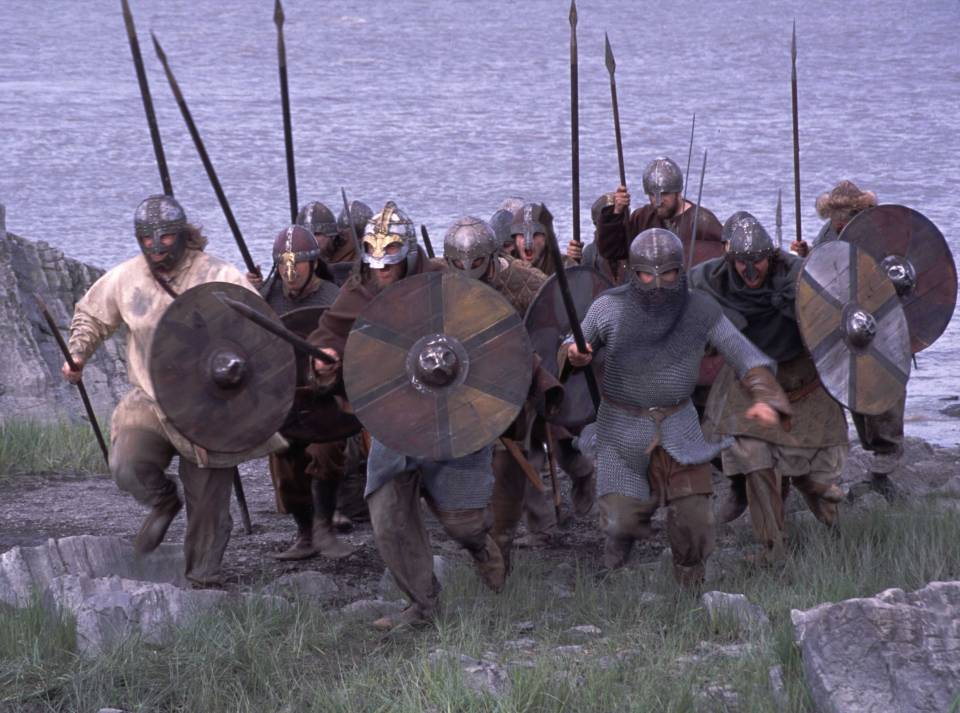
The shields, however, were as round as they come. Before the invention and widespread adoption of kite shields, whose main benefit was protecting the legs, the round shield was a favorite amongst Viking warriors. These were usually sparsely decorated, but important individuals could have intricate designs painted on them and have gold or silver trimmings. The shields were crafted out of linden wood, favored for its light but dense properties, meaning that a cleave would dig into the shield but would not penetrate it without a second, much harder, attempt. As a combat tactic, the Vikings would interlock their shields much like the Romans did, creating a wall of protection against enemy blades and arrows.
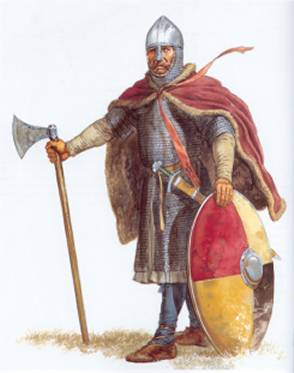
For weapons, the Vikings preferred a spear or an axe, both of which could be thrown with impressive accuracy. The axes were single bladed, sometimes attached to long handles like a crude polearm, and had a head with an easily recognizable L shape. Swords were also used, but were very expensive to make and as such would be pointless for the common Viking, who could use his axe as a tool as well as a weapon.
The 2000 game Rune by Human Head Studios is filled to the brim with Viking weaponry and epitomizes the view of the Viking warrior, clad in mail armor with a horned helmet branding a massive double sided axe. Despite the glaring inaccuracies, there is a definite "Viking feel" to the design of the clothing and weaponry, especially the swords that look very similar to the ones that have been uncovered with its broad blade and large pommel. Of course, the round shield is present and is an iconic representation of the Viking age.
Viking: Battle for Asgard, in contrast, is a little more frugal with the varying weapon types and the heavy armor, focusing rather on a few distinct bladed weapons including the axe with its very typical shape. The player character is wearing very little armor and the use of two weapons rather than carrying a shield seems more dangerous than anything else, but at least he looks significantly bad ass.
Architecture and Construction

Vikings lived as other people did in those years, in simple homes constructed with stone and wood. The most common of these houses was the longhouse, which could be as small as five by fifteen meters and typically housed a single family. The beds were along the walls and in the middle was the common area, where people would gather around a fire to eat or converse. The houses were very simple, without any windows and held few possessions, but more complicated buildings were made for important families or important functions, such as gathering halls or places of worship. These buildings may have been decorated with carvings or paintings, but there were no dragon heads on Viking buildings, which were strictly functional rather than impressive.
Viking longships, however, usually had a dragon or serpent carved into the prows, which were there to protect the sailors on the voyage ahead. The longships were very adaptable to various types of traveling, whether across open oceans or down winding rivers, and could be built in just over a month by a capable crew of Vikings, overseen by a head shipbuilder. The ships were symmetrical, with no defined front or back, which allowed them to be reversed very quickly when navigating difficult waters or during combat. Most longships were equipped with sails for longer journeys, but all of them could be rowed, with the Vikings sitting on chests containing their possessions (or loot) rather than having any benches. Also, the longships had places to attach shields on the sides for protection against the elements or arrows if the threat arose.
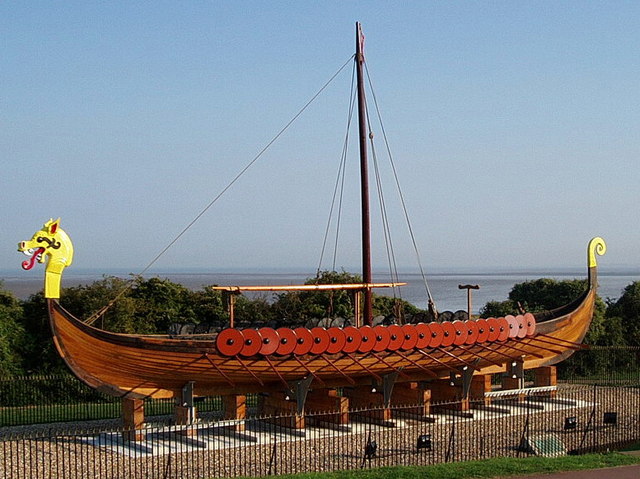
Age of Empires 2: Age of Kings featured the ability to play as the Vikings, but the buildings and units weren't necessarily accurate or distinct from other factions. Of the Viking-specific units they did have the only one that was really accurate was the Viking longship, as is customary. However, they also featured stave churches, which were massive wooden places of worship adorned with Christian symbols, which were built after the decline of Viking culture in the 12th century. Perhaps the association between Vikings and stave churches is the distinct art style of the decoration, which was deceptively similar to the early Viking decorations, but also the locations of these churches, as they were built primarily in Scandinavian countries and were never adopted in other countries.
The 1998 adventure/edutainment game Vikings is more accurate in its portrayal of Viking villages but prominently features the Viking longship and is littered with Viking-era drawing and decorations, perhaps to a greater degree than was common in the era it is emulating, simply to reassure the player that he is, in fact, playing a game about Vikings. The bland and dreary truth of simple, functional housing and clothes isn't really good material for a videogame.
Mythology
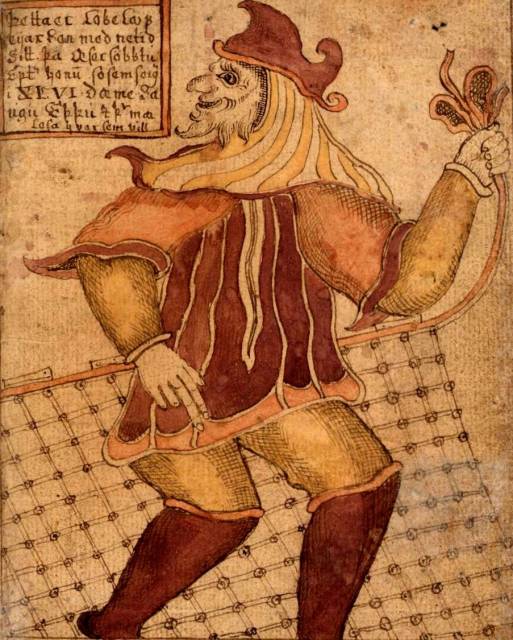
Viking mythology is filled with fornicating gods and bloody combat, but the only gods that have reached popular fiction are Odin, Thor, and to some degree, Loki. Odin is the king of the gods, the ruler of Asgard and is associated with war, wisdom, magic and poetry. Thor is the god that most people know of, he who carries Mjöllnir, the hammer forged by Odin which grants him dominion over thunder and lightning. He is the son of Odin and is connected to storms, destruction, fertility and the protection of mankind. Finally, there's Loki, the trickster. Much like Hermes, the god of Greek mythology, Loki is the sometimes-helpful sometimes-hindering mischievous and malevolent trickster god. He is a shapeshifter and is the father (and mother, in one odd tale) to many gods including Hel, she who guards the underworld.
Microsoft Game Studio's Age of Mythology encapsulated the general view of these Norse gods. It allowed you to choose one of the three gods: Odin, Thor or Loki when using the Norse civilization, and you unlocked a different set of powers depending on which god you chose. The powers were associated with the respective god's themes, Odin's being strength and resilience, Thor's being directly destructive and Loki's being strange and magical (you could summon a dragon or cause trees to walk around). Other gods, such as Freya the Norse goddess of beauty, are mentioned briefly but do not feature as primary gods possibly due to their relative obscurity.
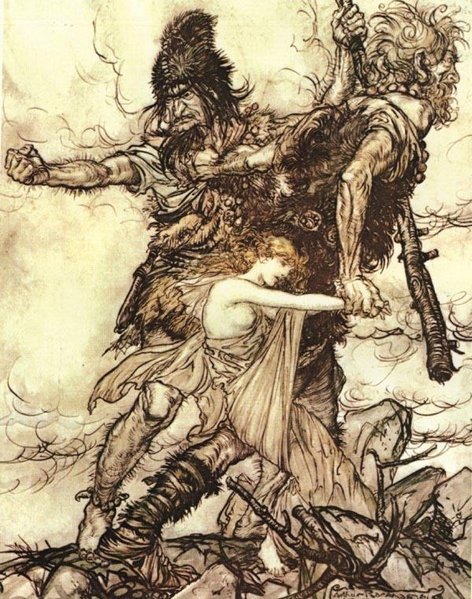
Counter to the gods of Viking lore are the Jötunn, a race of nature spirits with superhuman strengths. These giants would battle the gods as well as intermarry and have later evolved into the Norse folklore creatures called Trolls. Trolls in videogames are grotesque monstrous beings that consume the flesh of men and attack with enough force to cause the mountains to shudder and ground to split. They are notoriously difficult to kill, to the degree that the Neverwinter Nights series (and other games based on Dungeons and Dragons) require a weapon or spell imbued with fire or acid to kill it.
The Jötunn reside in their titular home of Jötunheimr, the gods reside in Asgard and the mortal men live out their lives in Midgard; three of the nine worlds in Viking mythology, which are all connected by Yggdrassil, the world tree. Yggdrassil is a massive ash tree whose branches extend far into the heaves and roots extend far into distant places. It sustains and holds the worlds together and is often the meeting place of the gods when they hold their courts, as well as home to a wyrm who gnaws at its roots and has done so since the beginning of time.
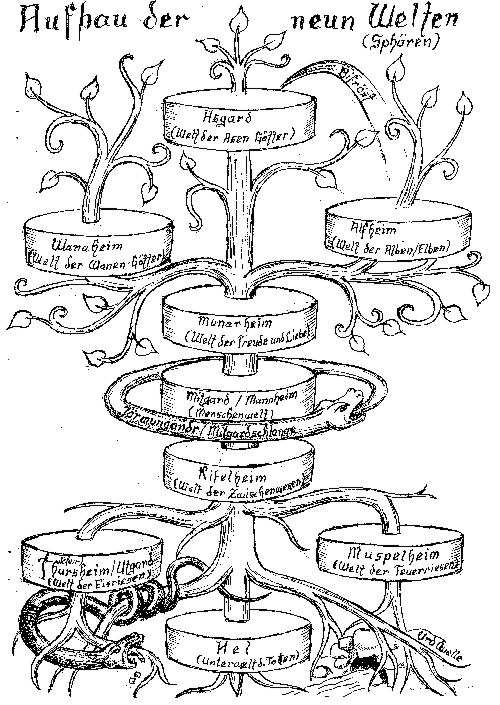
The world tree, or life tree as it is sometimes known, is featured in many Japanese Role Playing Games (JRPG), most prominently in the Final Fantasy series. In Final Fantasy IX, for example, there is a massive tree called the "Iifa Tree" which is a sentient creature that acts as a location for a difficult battle, but also as a plot point later in the story. Despite being a great deal smaller than the Yggdrasil of legend, the Iifa Tree has roots that extend deep into the earth, and is a conduit for the souls of the dead. Also, in Final Fantasy VII, the player starts off in a city called Midgar, whose technological advances have given people the ability to tap into the lifestream of the planet by extracting it from the earth as a liquid source of power.
Finally, it is important to mention Ragnarök, the doomsday legend. Ragnarök can be translated to "final destiny of the gods" and is a set of future events that brings about a cleansing rebirth of the worlds. Natural disasters and great battles will tear through the world tree and in the end there will be a single man and woman who will repopulate the human race. The battle of Ragnarök is between all who reside in the nine worlds and on the side of the gods are the Einherjar, warriors who have died in battle and who reside in Valhalla, a great hall in Asgard, as they await their time of glory. The Einherjar are chosen by the Valkyries, a host of female figures who decide who shall die in battle and tend to the warriors once they enter the great hall.
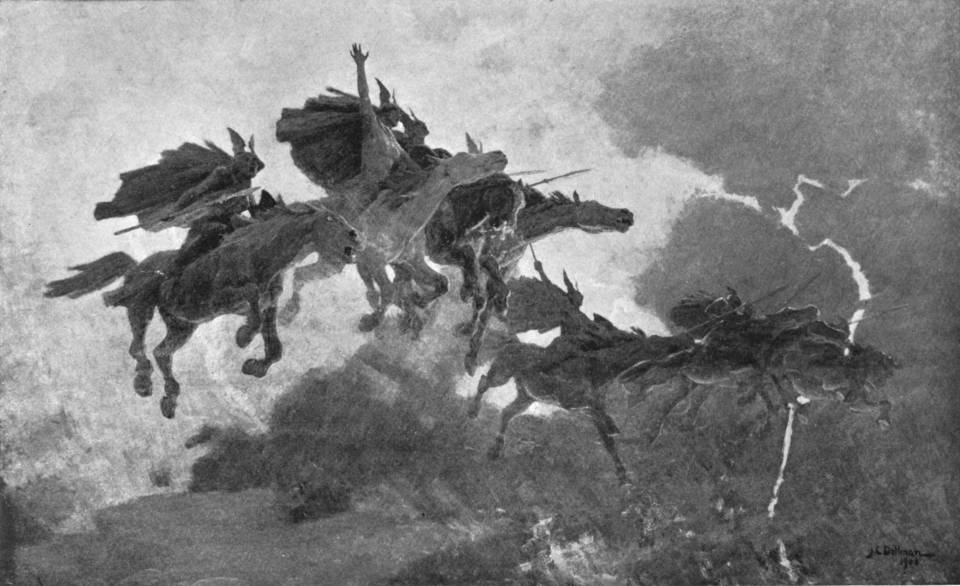
Valkyries are to be found in a whole slew of videogames as either playable characters or powers to unleash when the time is right. One such game is Valkyrie Profile, a JRPG/side-scroller hybrid by Square Enix wherein you play as a Valkyrie tasked with recruiting warriors for the coming Ragnarök. You must not only recruit warriors, but also train them in dungeons to ensure that when Ragnarök comes, which is inevitable, they are prepared.
Dwarves and Elves
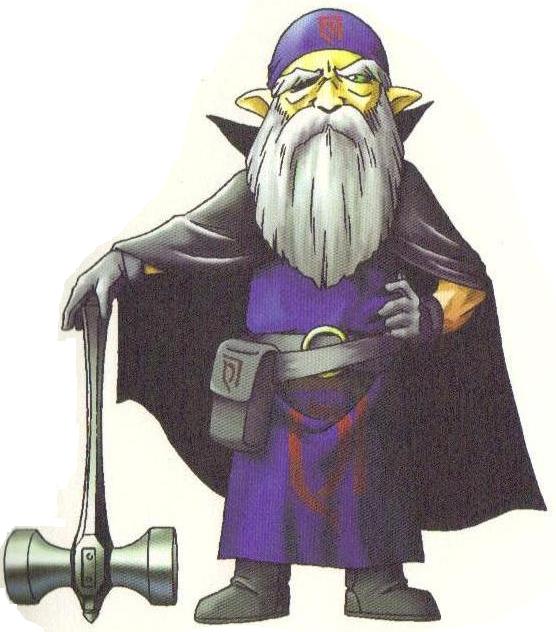
When J.R.R. Tolkien was writing The Book of Lost Tales, a series of stories which would eventually become The Silmarillion, he looked to the Viking legends of the dwarves as inspiration for his own race of mountain men. These legends were superimposed with legends surrounding Vikings to become the modern view of the dwarven race, which are heavily based on J.R.R. Tolkien's initial descriptions. These short, ugly and hairy people were excellent miners and smiths who predated the race of men and reside in the world of Svartálfaheimr.
You don't have to look far to find a videogame containing some form of dwarven race and the world's most popular Massive Multiplayer Online Role Playing Game (MMORPG), World of Warcraft, is a good example of the modern interpretation of what a dwarf is supposed to be. Stout fighters with little time for fancy words whose society is deeply rooted in tradition and honor and who specialize in heavy-handed melee combat and weaponsmithing.

The elves of Tolkien's Middle Earth are also inspired by the elves in Norse mythology, specifically the Ljósálfar, or light elves, who dwell in the world of Álfheimr. They look mistakably similar to normal humans, but have god-like powers and are said to glow with unearthly radiance and are "fairer to look upon than the sun".
Like the dwarves, the elves are a predominant feature of most fantasy games and are seen as the antithetic race to the dwarves, great scholars and thinkers, well-versed in the ways of magic and who find great esteem in elegance and intelligence, which is reflected in the ways they deal with foes during combat. The "great debate" amongst fantasy fans is whether the race of dwarves or the race of elves is to be revered as the greatest addition to popular myth.
Runes
Runes were an early form of written language and were the predominant alphabet for Germanic languages before the adoption of the Latin alphabet. Runes are considered to be symbols of power, and although there are vague accounts that runes were used for some magical or divinary purpose, usually to create magical objects, nowhere does it say that the words of power had to be written with runes, it could just as well have been any set of glyphs if those were known by the writer.
Runes were used when crafting runestones, massive stones erected at various locations that were inscribed with a band of runes, usually in the shape of a serpent, that spoke of historical events, legends or poems written as memorials to dead men. There are about 3,000 runestones left in Scandinavia, but the stones were erected wherever the Vikings had landed, and some have been found as far as England and Ireland.
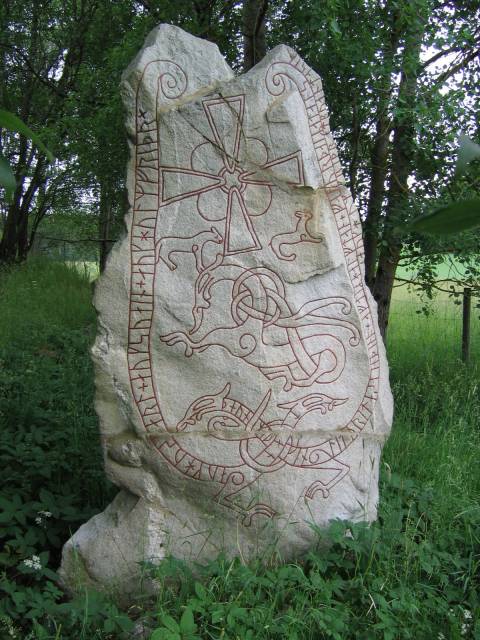
Runes and runestones are often used as magically charged objects which can be attached to weapons and armor to bestow the specific magical property onto the item. Dragon Age: Origins had an enchantment feature where you would embed runes into slots on weapons and armor to power them up. This could only be accomplished if you had found or purchased the runes beforehand and was able to get to an enchanter who could perform the task for you. The runes used in Dragon Age don't look similar to actual Viking runes, but portray the idea that the runes themselves were magical and carving them in stone or onto steel would provide a magical effect. However, if one were to be able to read the runic alphabet, the whole premise would perhaps be seen as silly since carving the letter "B" into a gem and then attaching that to a sword doesn't seem like it would do much to improve the sword's capacity to kill people.
The Viking Army
Much of the world views Vikings as bloodthirsty barbarians, who recklessly raid civilized villages in a desperate grab for treasures. They leave none alive to tell the tale as they slay whom they cannot abduct and burn what they cannot steal. Although this is partially true, as Vikings were known to commit bloody raids, this description is based mostly on the eye-witness accounts of surviving victims, who saw their attackers as mindless heathen brutes whose only aims were riches and chaos. Vikings were organized and tactful and committed horrible acts in a deliberate attempt to strike fear into the hearts of all who knew of them; it looks like it worked.
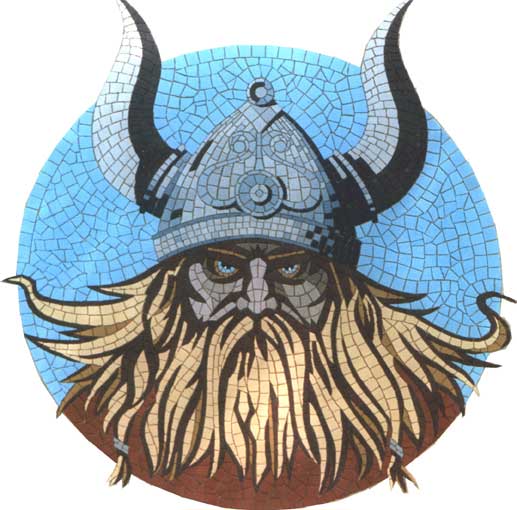
Before the Christianization of Viking society, Viking life was based on living in villages, all of which had their own king and leadership. Due to the decentralized society, there were many fights between the various villages, and in the end the Vikings grew tired of fighting each other and set their sights on the lands across the seas, each village setting out by themselves to steal what could be found on distant soil. Once Christianity had firmly taken root, it was the Viking kings who commanded the raids, gathering scores of warriors in large scale raiding parties and using the same tactics that had worked for years.
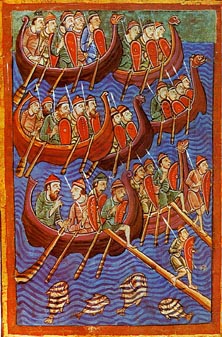
The Vikings would land ashore, kill everyone, steal everything that wasn't bolted down and burn the rest. They would also hang surrendering enemies as a display of terror to all who saw it. This was a form of shock tactics which worked well in their favor and the evidence of this is seen in the massive amounts of treasure and slaves they would capture. People feared the Vikings; they could arrive at any time and would kill without mercy, exactly the effect that they wanted, as the Vikings weren't barbarous murderers but ruthless strategists.
Vikings in strategy games have always been expert seafarers and raiders, with little other skills. The first Medieval: Total War game featured an expansion called Viking Invasion, which added the Vikings as a playable faction. Specific to this faction were the special naval units that could travel faster and further than other naval units, and they received extra cash for destroying buildings but would go bankrupt if no raids were made, considering their lack of any internal economic force. The game also had a humorous addition with the idea that the heathen Vikings could be converted to Christianity, which greatly diminished their potency in raids. Considering how the adoption of Christianity led to the end of the Vikings, this is not only factually respectable but also just a little cheeky.
Berserkers
Most notorious of all the Viking warriors was the berserker, whose history is muddled by legend and misconceptions. What archeologists have determined is that they most likely existed and were hardened warriors who fought in a trance-like fury which bestowed upon them great resilience in battle. The legends speak of them eating fire and being immune to edged weapons, which might be a gross exaggeration as they are described in sagas and poems simply as ravenous men who loot, plunder and kill indiscriminately. They were a great asset as shock troops to a Viking army whose main tactic was to surprise and overpower the enemy before they had time to react. Their trance-like state could be the result of the use of hallucinogenic mushrooms or alcohol, but can also be explained as an adrenalin rush caused by working themselves up before a battle akin to playing rock music while sitting in a transport helicopter.
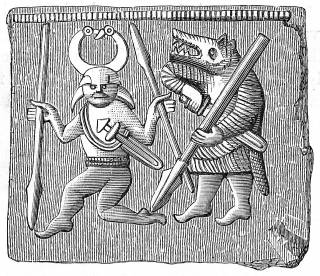
"I'll ask of the berserks, you tasters of blood,
Those intrepid heroes, how are they treated,
Those who wade out into battle?
Wolf-skinned they are called. In battle
They bear bloody shields.
Red with blood are their spears when they come to fight.
They form a closed group.
The prince in his wisdom puts trust in such men
Who hack through enemy shields."
— Hrafnsmál (9th century skaldic poem)
The use of the berserker legend in videogames is always tied to the idea of a short-term boost to attack and defense, but sometimes with a diminished control capacity. The Doom series featured a berserk pack which, when activated, would cause the player to scream like a madman while running around hitting everything with his overpowered fists, an odd addition to a first-person shooter. Other games, from God of War to SpongeBob Squarepants: Creature from the Krusty Krab, feature this type of berserk/fury mode, relating the increase in strength to an out-of-control experience.
Conclusion
The use of Vikings in videogames is based on the common idea of what a Viking was: bloodthirsty brutes who loved nothing more than battle and fire. There is little regard to their actual history, such as the importance of women, their early democratic societies or anything other than the misguided descriptions made by the survivors of their many, many raids. Their heavy use of shock tactics was reinterpreted to represent their barbarism and their later economic prowess due to an amassing of wealth is generally overlooked. Vikings were voracious sexual predators who killed anyone who stood in their way and stole your riches and your women, burning down what was left. In other words, great source material for a violent videogame.
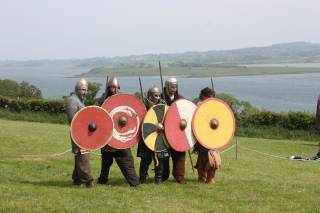
However, the Viking weaponry and art style found in games isn't too far off from reality. It is easy to spot a Viking due to the style of weapons he uses, the round shield, the broad swords, the L-shaped axe and the longboat, so I guess the glaring flaw of having horns on their helmets is forgivable. Perhaps having the Viking "flip out" and haplessly kill everyone around him may not be the most historically accurate, but damn it if it isn't fun.
So there it is, the reality of Viking history compared to how videogame designers see them. If you can't get enough of Vikings, you could look at the various sources I cited below, as I touched upon just a small fraction of the daily life of a Viking, which was more about running a farm than burning down buildings. Also, you can explore how the Vikings have influenced other media including Viking metal and crazy trip-tastic movies with lots and lots of blood. And remember; í vísdómi er dýrð.
